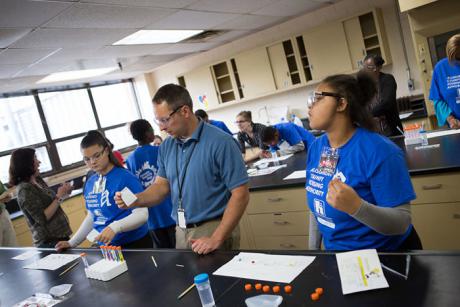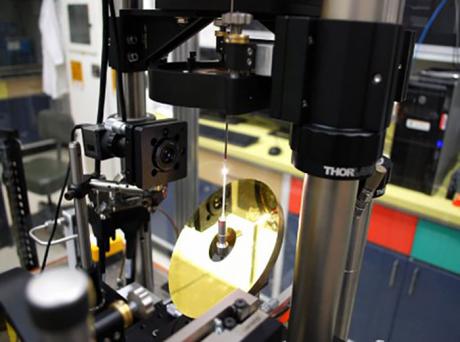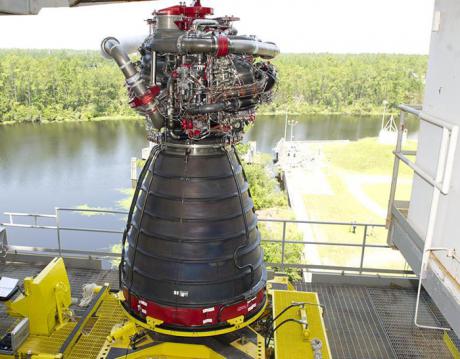The National Energy Technology Laboratory (NETL) in collaboration with Allegheny County’s Executive Office and the Allegheny County Housing Authority, hosted a Remake Learning Lab Day on May 24, 2017, at NETL’s South Park, Pa., site outside of Pittsburgh.
Remake Learning Days offer innovative learning experiences for children. NETL’s program seeks to pique student interest in science, technology, engineering, and mathematics (STEM). This year’s Lab Day featured laboratory tours, presentations, and hands-on science activities led by a diverse group of laboratory professionals.
Remake Learning is a professional network of educators and innovators working together to enrich education for children and their families, caregivers, and educators. The network, which comprises more than 250 organizations, is a collaborative effort to inspire and empower lifelong learning in Pittsburgh, West Virginia, and beyond.
About
News and Events
Research and Programs
Carbon Management Point Source Carbon Capture Carbon Dioxide Removal Carbon Dioxide Conversion Carbon Transport & Storage Hydrogen with Carbon Management
Resource Sustainability Methane Mitigation Technologies Minerals Sustainability Natural Gas Decarbonization and Hydrogen Technologies Advanced Remediation Technologies Energy Asset Transformation
Key Lab Initiatives Advanced Alloys Signature Center (AASC) Science-based Artificial Intelligence and Machine Learning Institute (SAMI) Center for Microwave Chemistry (CMC) Center for Sustainable Fuels and Chemicals (CSFC)
Energy Technology Development Office of Energy Efficiency and Renewable Energy Battery Workforce Initiative Cybersecurity, Energy Security, and Emergency Response Office of ElectricityGrid Resilience
Business
Library
Explore our Library

Approved Categorical Exclusions Environmental Assessments Environmental Impact Statements Oil and Gas Projects Summaries NETL Fact Sheets NETL Newsletters Publication Search Energy Data Exchange (EDX) FECM External R&D Final Technical Reports Summary Information for External R&D Awards Technical Reports Series (TRS) Peer Review Reports Interagency Working Group Initial Report
- Research and Programs
- Carbon Management
- Core Competencies
- Resource Sustainability
- University Training & Research
- Key Lab Initiatives
- Energy Technology Development
- Featured Infrastructure
- Methane Emissions Reduction Program
-
- Business
- Technology Transfer
-
- Library
- Energy Analysis
-
- About
- News and Events
- Education








